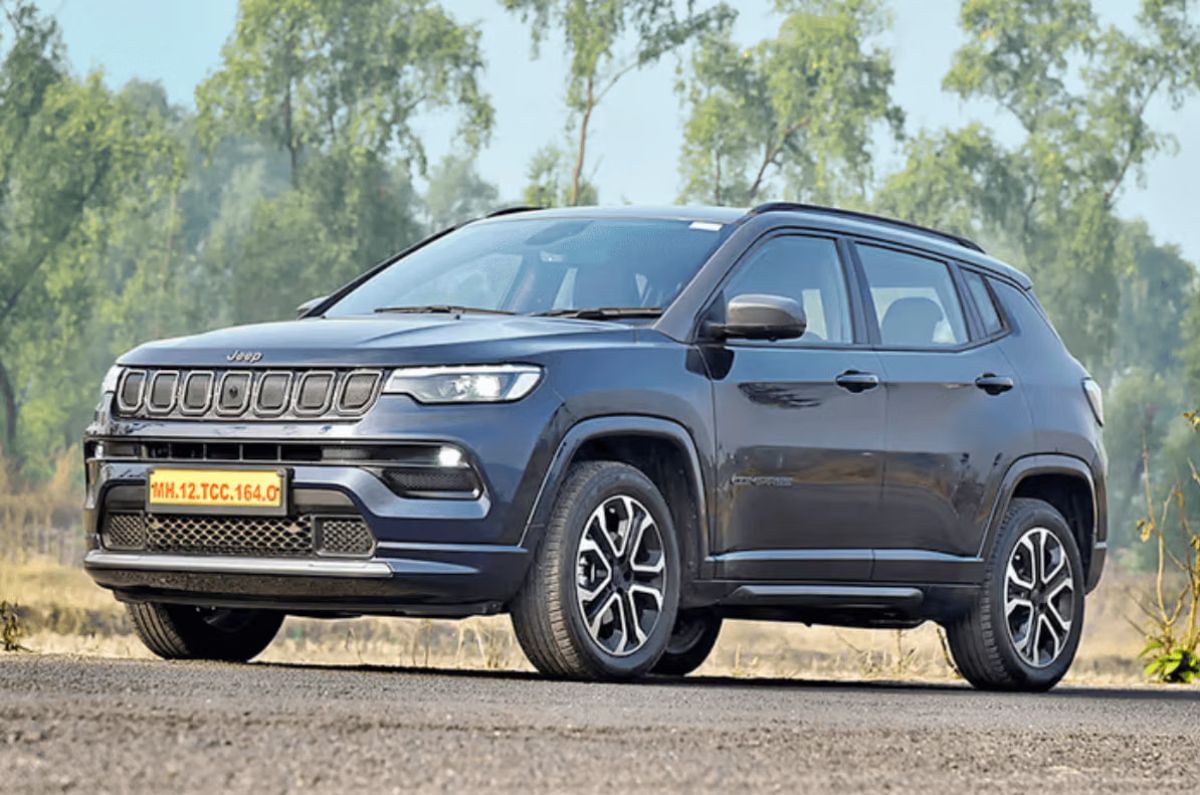
The Jeep Compass is the entry point to the American carmaker’s line-up in India, and one that has single-handedly made the brand mainstream here. It is available solely with a diesel engine, and the ex-showroom prices in India currently range between Rs 18.99 lakh and Rs 32.41 lakh; previously, it was also offered with a petrol engine option. Being a Jeep, the Compass’ biggest appeal is its tough build and genuine off-road ability, and here are some of the reasons why you’d want to buy one – or why it may not be for you. First, the positives.
Great ride and handling

The Compass is just fantastic on bad roads – it simply smothers any sort of rough surface below it. That’s especially true once you up the pace, after which the ride is just flat. It is also light and easy to drive at low speeds, and even around a set of twisties, you will marvel at how poised the Compass feels. Body control is good, and a well-weighted and accurate steering further inspires confidence. Simply put, it has a great ride and handling balance that’s well suited to Indian roads.
Feels tough, 4×4 cred

The fantastic ride and handling balance is further complemented by a robust and tough feel in how the Compass drives. The beefy suspension means you do not need to slow down for rough patches. It will take everything in its stride. It is also the only SUV in its class that packs in proper off-road ability with 4×4 on the top-spec diesel-AT variant. This is where that Jeep DNA really shines through. It also gets a low-range mode, hill-decent control and a 4WD lock function, which can be put to good use to make your way out of any tricky situation.
Premium interior

The Compass also impresses with a very premium and feature-packed interior, almost feeling like it’s from a segment above. There’s good use of quality materials, like leather with cross-stitching on the dashboard, faux leather on top of the dash, and tasteful bits of chrome and gloss black splattered all around. Even the plastics are good quality, and the tactile feel of the physical switchgear is a bonus. There’s a laundry list of features, too – a slick 10.1-inch touchscreen, a fully digital instrument cluster, wireless Apple CarPlay and Android Auto, wireless charging, cooled front seats, a panoramic sunroof, a 360-degree camera, and more.
That said, here are a few reasons why you might want to look elsewhere.
Lack of a petrol engine option
![]()
A sole diesel engine option limits the appeal of the Compass, especially in areas like Delhi-NCR, where one cannot keep a diesel vehicle beyond 10 years. The 170hp 2.0-litre diesel engine is also not particularly refined, especially at low revs, and that takes away some appeal from an otherwise premium SUV. Make no mistakes, it has plenty of grunt, though. The Compass was sold with a 1.4-litre turbo-petrol engine until April 2023, but it was discontinued as it failed to comply with the stricter BS6.2 emission norms that came into effect then.
Limited interior space

The Compass has very comfortable seats, both at the front and rear, but overall space falls behind immediate rivals. On long trips, four passengers with all their luggage make for a snug fit, and deft balancing of the front seat travel is needed to offer sufficient knee room for tall passengers. Also, the rear seat doesn’t quite have the width for three passengers to be seated comfortably abreast. For the price you pay for a Compass, there are more spacious SUVs out there.
It is expensive
And that finally brings us to the point that the Compass is expensive for what it is. It doesn’t quite have the size to match its price, and that could be a letdown for many buyers. This is especially true of the fully loaded top-spec Model S trim, which is priced at Rs 28.33 lakh (ex-showroom) for the diesel-manual variant. For reference, a Mahindra XUV700, which is larger and has three rows of seats, is priced at Rs 25.14 lakh (ex-showroom) for its top-spec diesel-AT AWD variant.
Also See:

